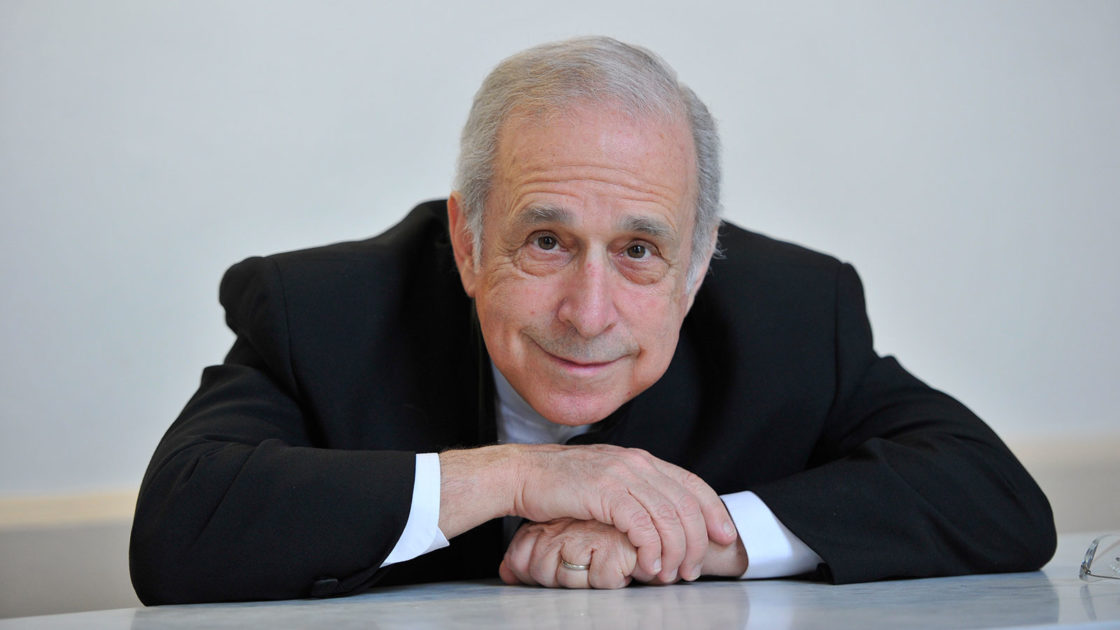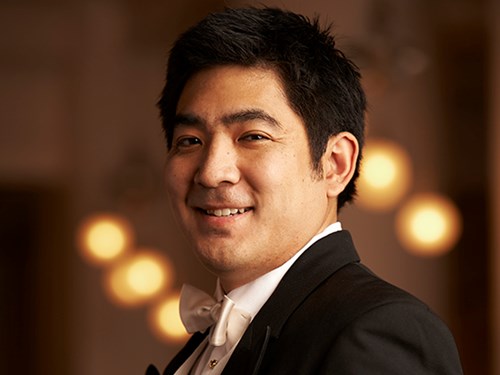At the Schermerhorn
The Conductor Saves the Day: Romantic Rhapsodies at the Schermerhorn
On the weekend of January 30 through February 1 the Nashville Symphony presented a concert titled Romantic Rhapsodies which featured Johannes Brahms Third Symphony (No. 3 in F major), George Enescu’s First and Second Romanian Rhapsodies (Op. 11, No. 1 & 2) as well as Béla Bartók’s two Rhapsodies for Violin and Orchestra featuring Nashville’s own Concertmaster Jun Iwasaki on violin. It was an evening of virtuosity and artistry.
Johannes Brahms’s Third Symphony, particularly the first movement, is an exemplary essay in the process of thematic development, witnessed first in how the grandiose

opening theme, first characterized by a two note gesture, is developed and proceeds to a rustic, even pastoral conclusion in the middle of the exposition. This theme was brought out and delivered with a nuanced enthusiasm by the orchestra under the baton of Lawrence Foster, an American conductor born to Romanian parents and who specializes in the music of Enescu. The rustic feel was further embellished by the opening movement’s second theme, warmly given by Titus Underwood (Oboe) and James Zimmermann (Clarinet). Overall the entire symphony was wonderful. Indeed, Foster’s abilities to maintain a delicate balance in Brahms’ nostalgic orchestration, particularly in the Andante, this time with Zimmermann’s clarinet with Julia Harguindey’s Bassoon, demonstrated that this Enescu expert also knows his Brahms, and very well at that.
The second half of the concert opened with Bartók’s Rhapsody No. 1. Both of Bartók’s Rhapsodies are incredibly difficult pieces, written not as commissions, but to be dedicated to personal friends and violin virtuosos Joseph Szigeti (the first) and Zoltán Székely (the second). Both rhapsodies are built on a pre-existing Hungarian genre, the verbunkos, which Bartók set within a western classical context. The opening slow movement (“Lassú”) was well begun with Foster coaxing the often striking dissonance of Bartok’s accompaniment from the orchestra in a spellbinding manner, particularly the otherworldly Hungarian cimbalom (hammered dulcimer), at the same time maintaining a restraint that allowed the Iwasaki’s virtuosic line to shine through. Then, however, at some point

half way through the second movement things began to feel off center. Whether it was the shared tempi or the dynamic balance, the movement finished unconvincingly and Iwasaki smiled with great relief. The Nashville audience applauded, but Iwasaki and Foster were in an intense conversation. Soon, Foster turned to the audience and spoke:
In a concerto, when something goes wrong “…you can blame the soloist, or you can blame the orchestra, but in this case it was the conductor’s fault.” He then turned back
to the orchestra and asked to restart from what I believe was rehearsal number 16. This decision was clearly adored by the audience as they clapped their approval. Suddenly, the Bartók began to sparkle. Iwasaki’s phrasing and warm tone emerged gently from within Bartók’s busy, at times nostalgic and at others cacophonous, accompaniment. The ending, now a glorious culmination, was rewarded by the entire audience leaping to their feet. In the second of Bartók’s Rhapsodies, there were no issues, it was performed with lively, and endearing abandon, reminding us all that Iwasaki is one of the cultural treasures of the Music City.
As for the Enescu, I much preferred the second movement with its interiorized songlike expressions as heard at a dance. In particular, one could hear in Foster’s conducting a recognition that Enescu’s deployment of folk themes are not the subject of his work, but instead the marvelous orchestral colors within which they are set.
As I left the concert that evening, and in the time since, I have thought about Foster’s decision to replay the ending of the Bartók. In the end, to have risked personal criticism as a conductor in order to ensure that the audience heard their ensemble, soloist and Bartok’s work in the best interpretation is a remarkably selfless and laudable act; indeed it saved the evening’s performance! As shown with both the Brahms and the Bartók, a great conductor makes great decisions and I hope I get a chance to hear him again soon. The Nashville Symphony returns on February 20 with Beethoven’s Birthday Bash.



